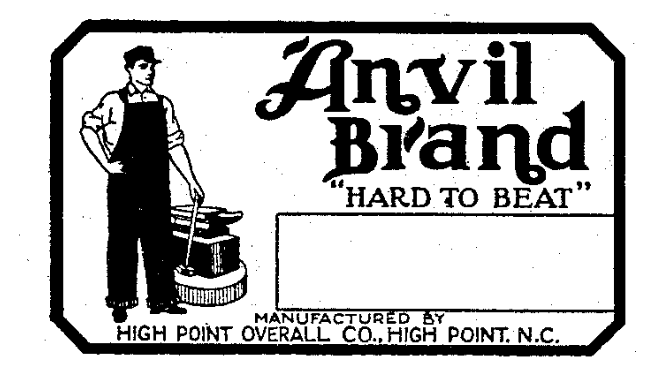The Evolution of Anvil Knitwear
Anvil Knitwear’s story is a fascinating journey through American industrial history, rooted in the late 19th century. The company’s origins can be traced back to the High Point Overall Company, established in 1899 (Phillips, 2014). This company, based in High Point, North Carolina, specialized in producing sturdy work clothes, a testament to the robust industrial activities of the era.
Development and Transition:
Over the years, High Point Overall Company evolved, adapting to the changing demands of the apparel industry. This evolution led to the establishment of Anvil Knitwear. Initially focusing on workwear, Anvil Knitwear gradually shifted its focus towards knitwear and t-shirts. By the 1970s, it had become a significant name in the apparel industry, particularly known for its Anvil brand t-shirts. This transition marked a significant shift from the company’s origins in workwear to becoming a key player in casual and knitwear apparel (S, 2021).
Original High Point Overall Company Logo

1976 – 1985 Anvil T-Shirt Tag

Sustainability and Industry Leadership:
Anvil’s commitment to sustainability began to take shape in the early 21st century. Around 2007, the company underwent a significant transformation, placing a strong emphasis on eco-friendly practices and sustainable apparel. This shift was not only a business strategy but also a reflection of the growing global consciousness regarding environmental stewardship in the fashion industry. Anvil’s pioneering efforts in incorporating organic cotton and recycled PET in its clothing line underscored its leadership in sustainable fashion.
Financial Challenges and Acquisition:
Despite its innovative approach to apparel, Anvil faced financial challenges, which were a part of the broader struggles within the textile industry. These challenges led to the company’s acquisition by Vestar Capital in 1995 and eventually by Gildan in 2012. The acquisition by Gildan marked a new chapter for Anvil, integrating it into a larger portfolio and expanding its global reach.
Anvil Today:
The Anvil brand, as it stands today, is undergoing significant changes under the stewardship of its parent company, Gildan. This evolution involves a strategic decision to dismantle and relabel Anvil’s most popular styles under the Gildan brand. This move represents a consolidation strategy by Gildan, aiming to streamline its product offerings and leverage the strengths of its consolidated brand portfolio.
This transition is reflective of the broader trends in the apparel industry, where companies often realign and rebrand product lines to optimize market presence and operational efficiency. While this represents the end of Anvil as a distinct brand, it also signifies a new phase in the legacy of the products and styles that Anvil developed over its long history.
The relabeling process under Gildan’s name ensures that the quality and popularity of Anvil’s styles continue to reach their loyal customer base, albeit under a new brand identity. This strategy underscores Gildan’s commitment to maintaining the strengths of Anvil’s product line while enhancing their market approach through a unified brand strategy. Blank t shirt distribution outlets currently selling the Anvil brand are in the process of updating popular products such as the Anvil 980 to the Gildan line.
Thus, Anvil Knitwear’s journey from its origins in the High Point Overall Company to becoming a part of Gildan’s global brand portfolio is a testament to the brand’s enduring legacy and its adaptability in the ever-evolving fashion and textile industry.
Works Cited
Phillips, L. A. (2014, August). highpointnc.gov. Retrieved from https://www.highpointnc.gov/DocumentCenter/View/13874/High-Point-Historic-Industrial-Survey-with-map
S, B. (2021, November 14). History and timelien of the anvil t-shirt tag: 1976-Present. Retrieved from https://www.defunkd.com/blog/2010/07/29/anvil/




